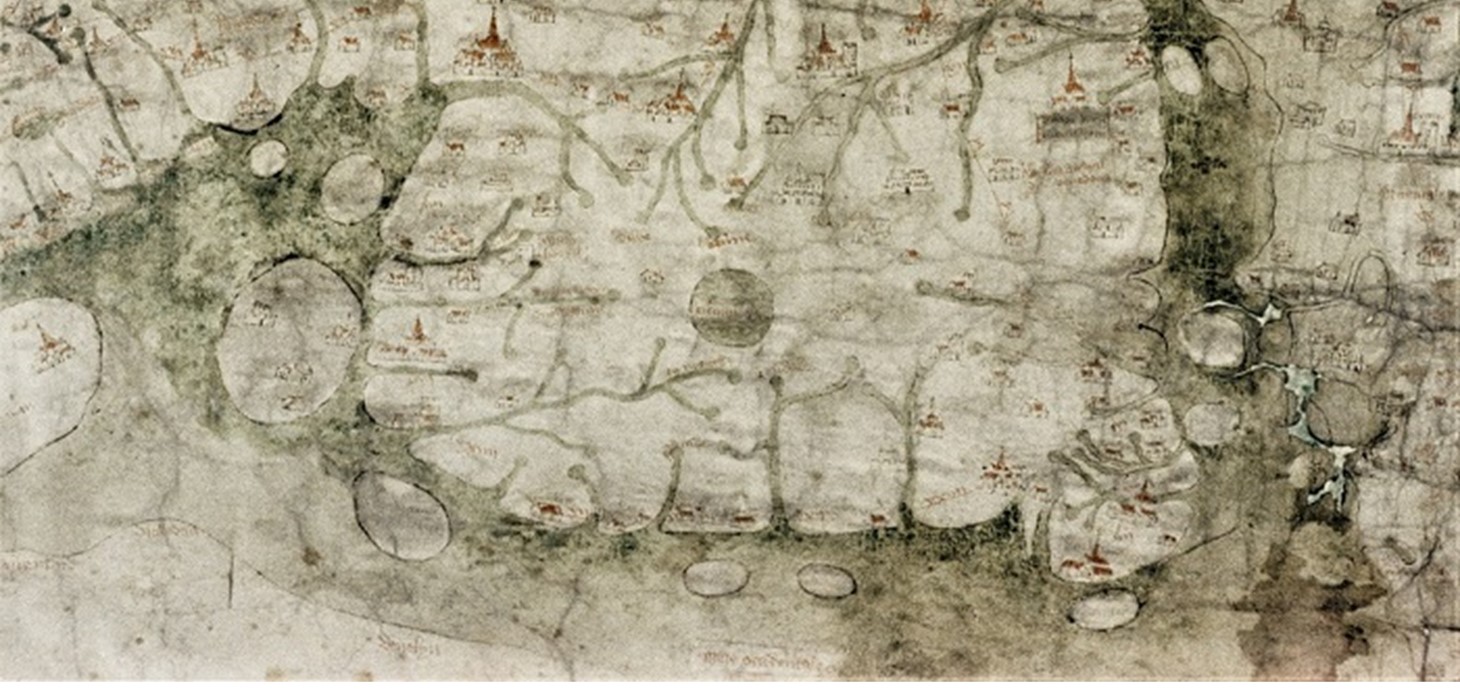
Extract of the Gough Map showing Wales and the two ‘lost’ islands of Cardigan Bay in the bottom-centre of the image. Note the map is orientated with East at the top; reproduced with permission of the Bodleian Library, Oxford.
A Welsh tradition dating to the medieval period of a landscape lost to the sea is plausible, new evidence on the evolution of the coastline of west Wales has revealed.
Drawing on geological data and a medieval map, the researchers – from Swansea University and the University of Oxford – propose how two islands may have come into existence and then disappeared again.
The study was inspired by the Gough Map, the earliest surviving map of Great Britain, perhaps with its origins in the thirteenth century, which is held in the University of Oxford’s Bodleian Library.
The map depicts two islands in Cardigan Bay in west Wales, which no longer exist. Each of them is depicted about one quarter of the size of the island of Anglesey in north Wales. One is between Aberystwyth and Aberdovey and the other between there and Barmouth to the north.
The research was undertaken by Simon Haslett, Honorary Professor of Physical Geography at Swansea University and David Willis, Jesus Professor of Celtic at the University of Oxford.
Their study investigates historical sources and geological evidence from the coastline and the seabed. It proposes a model for how the coast has evolved since the last ice age around 10,000 years ago, which provides a possible explanation for the ‘lost’ islands.
They suggest that the islands could be the remnants of a low-lying landscape underlain by soft glacial deposits laid down during the last ice age. Since then, forces of erosion have worn away the land, reducing it to islands, before these too were worn away and disappearing by the sixteenth century.
As finer sediments of glacial deposits are eroded away, the larger gravel and boulder component is left on the seafloor. The position of the islands coincides with the location of submarine accumulations of gravel and boulders, known locally as sarns.
Professor Simon Haslett of Swansea University Department of Geography said:
“We know that the west Wales coast has changed significantly over time. Evidence from the Roman cartographer Ptolemy suggests the coastline 2000 years ago may have been some 13 km further out to sea than it is today.
The Gough Map is extraordinarily accurate considering the surveying tools they would have had at their disposal at that time, and the two islands are clearly marked.
Our research increases our understanding of potential coastal processes acting along the coast of Cardigan Bay. It can also help with future research on post-glacial evolution of similar lowlands in other parts of northwest Europe.
Understanding coastline dynamics has never been more important. Some towns along the area we studied are vulnerable to climate and sea-level change, and it has been suggested that it may lead to some of the first climate change refugees in the UK”.
David Willis, Jesus Professor of Celtic Studies at the University of Oxford, said:
"Our evidence may provide an explanation of how the story of Cantre’r Gwaelod (‘The Lowland Hundred’) may have arisen. This lost land is said to have suffered a catastrophic inundation and is referred to in poetry in the Black Book of Carmarthen and in later folklore.”
The research was published in the journal Atlantic Geoscience and is available open access until 5 September 2022.
